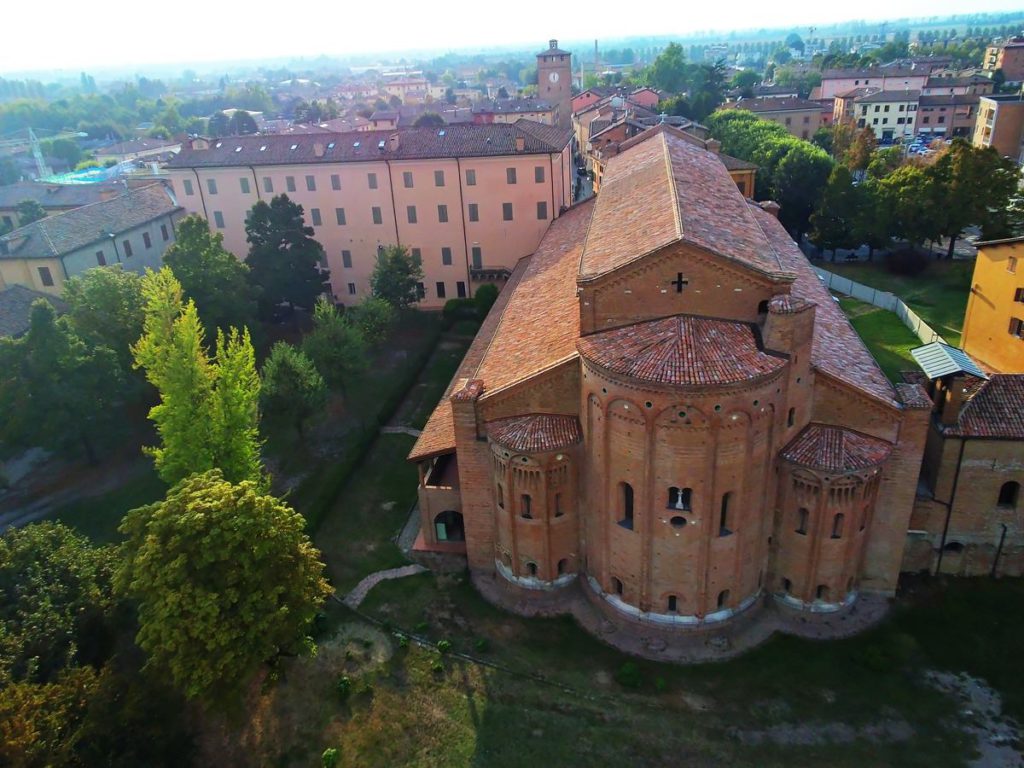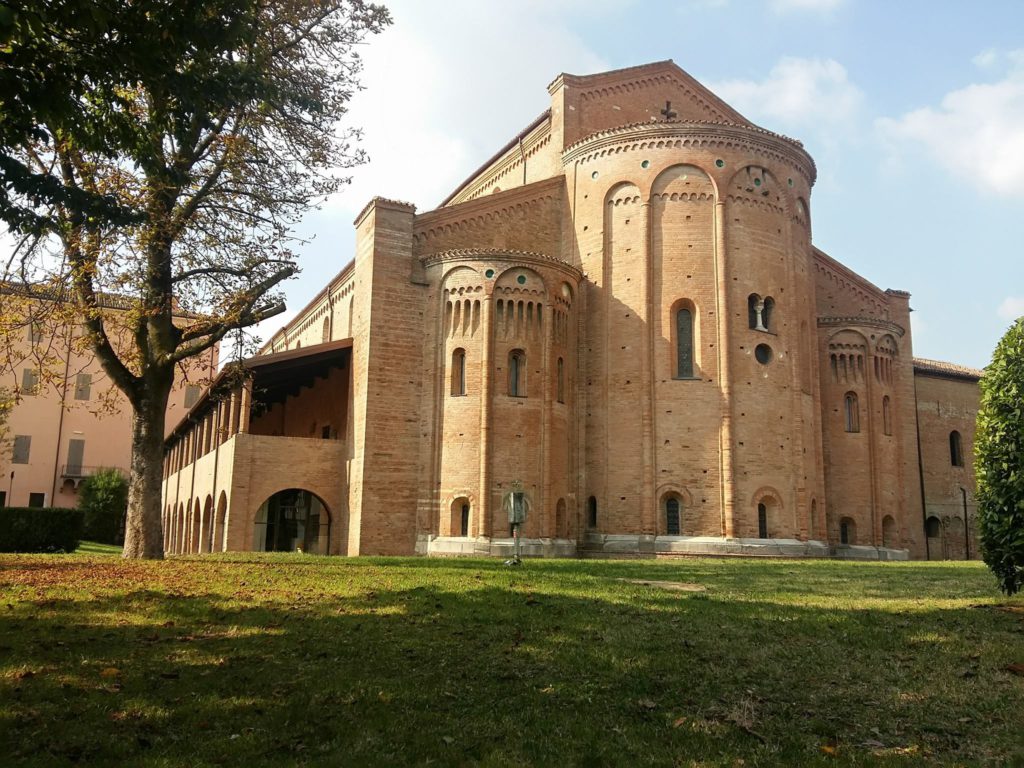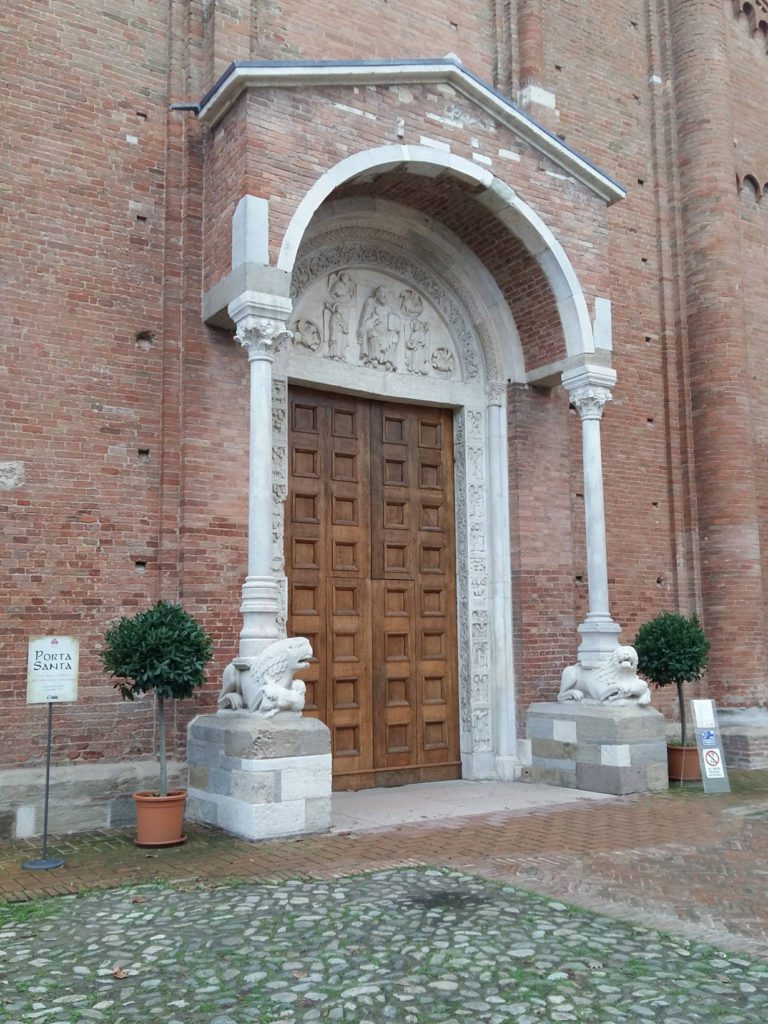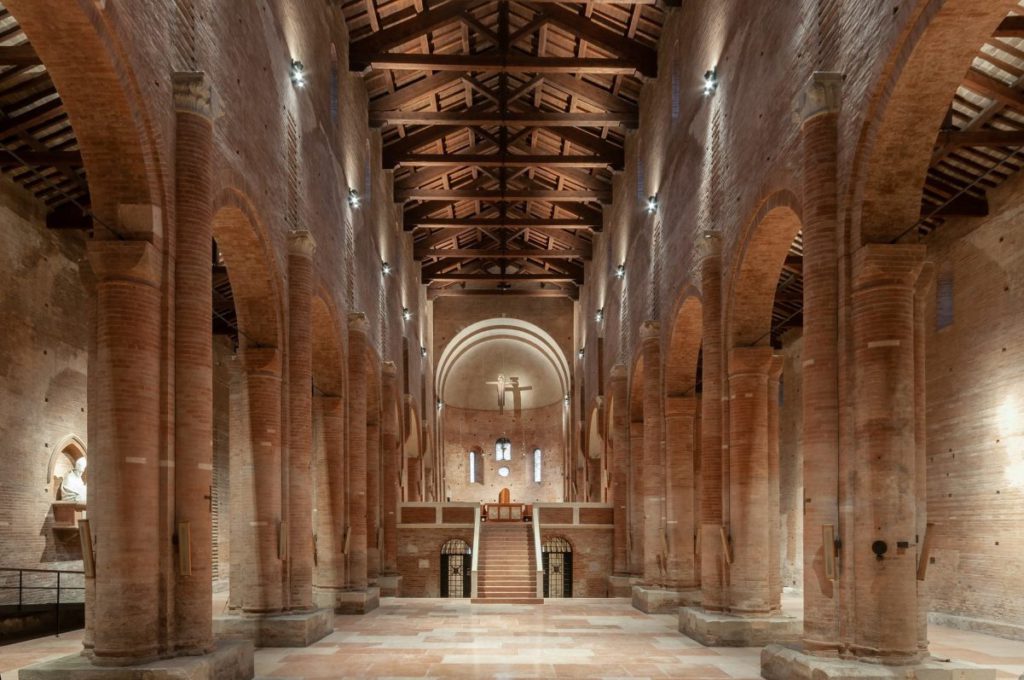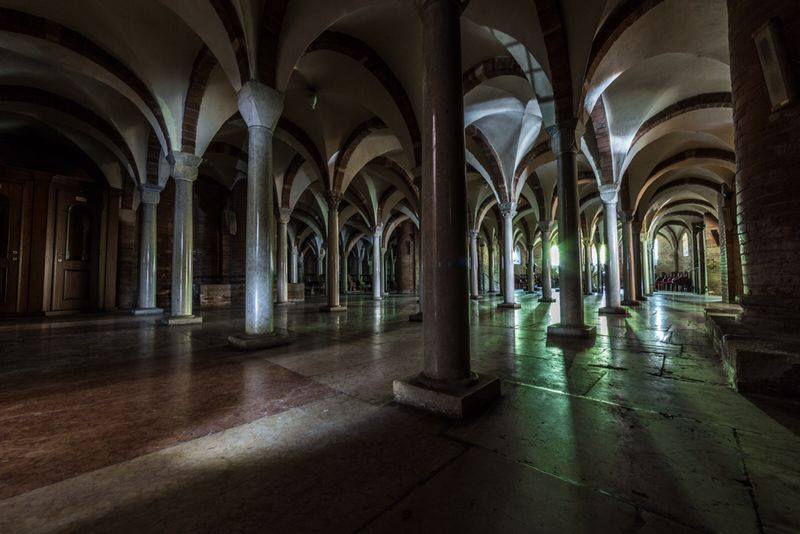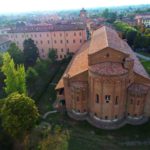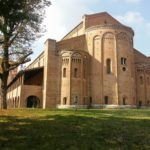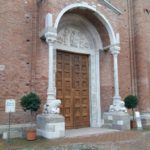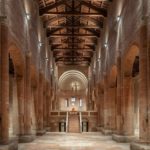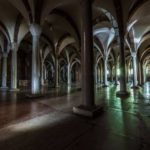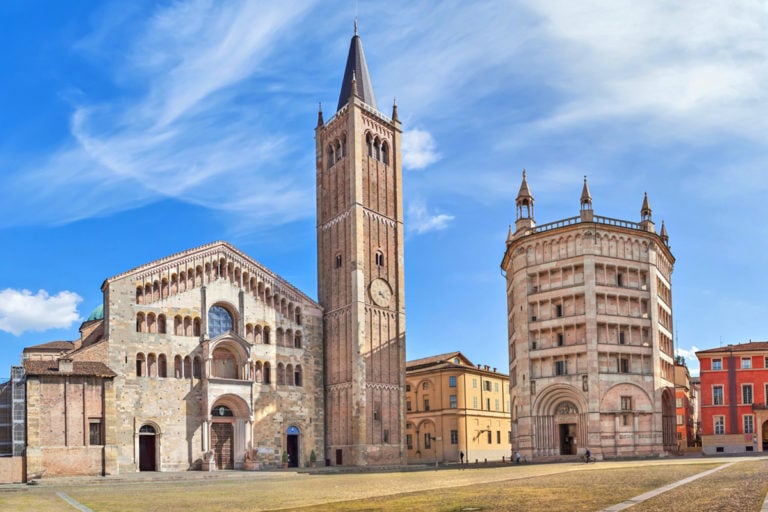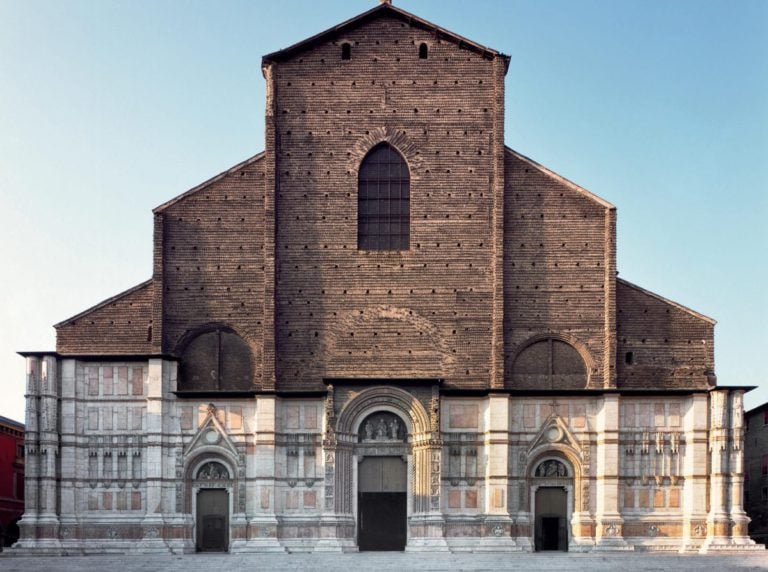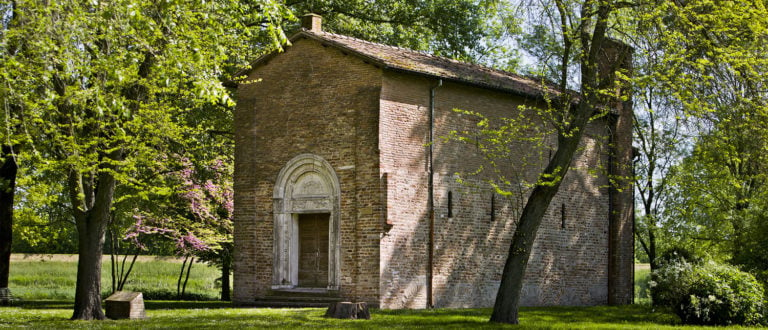If you’re following our Emilia-Romagna Walks and Ways, you’ll have noticed that two of the pilgrim paths in our region are called the Romea Nonantolana Way and the Longobarda-Romea Strata Nonantolana Way. They’re named after Nonantola Abbey, the historic place of worship, culture and hospitality that marks the start of the Romea Nonantolana and the destination of leg 7 of the Romea Strata Longobarda Nonantolana.
The abbey was reopened on 16 September 2018, restored and repaired after the 2012 earthquake.
You can visit it also on a Virtual Tour.
A BIT OF HISTORY
Nonantola abbey was founded during the Lombard dominion. It was a time of power games and intrigue, and some of it played out right here.
The monastic complex was founded by Anselm, former Duke of Friuli who took holy orders, in 752. The land was a gift from his brother-in-law, Aistulf, King of the Lombards and of Italy from 749 to 756, to increase Lombard influence in the area. Anselm thus became the first abbot of Nonantola and remained so until he was ousted in 756 by the new Lombard king Desiderius. He returned probably only in 774, when Desiderius was deposed by Charlemagne, and died here on 3 March 803.
Anselm soon made the abbey into a major Benedictine centre, keeper of the reliquary of Pope St Sylvester, which is still here today. Anselm also acquired the first core of codices for the monastery, creating a scriptorium. Over time, Nonantola became one of the main training centres for pre-Carolingian script.
Nonantola Abbey via Facebook
Nonantola Abbey via Facebook
Nonantola Abbey via Facebook
Nonantola Abbey via Facebook
Nonantola Abbey via Facebook
ARCHITECTURE
The basilica is one of the most important examples of Romanesque art in Europe, on a par with Modena cathedral.
Indeed, the exquisite entrance lunette is attributed to the same sculptor behind the decorations in Modena, Wiligelmo; the jambs are earlier.
The carvings include:
God enthroned blessing, flanked by two angels and surrounded by the 4 evangelists (in the lunette);
the founding of the abbey and its first few centuries (left jamb);
the nativity and early life of Christ (right jamb).
The portal is framed by a canopy borne by two lions (another parallel with Modena cathedral) resting on two bases – one circular, one square, symbolising the dual nature of Christ as both human and divine.
The lion supine is Christ risen; the prey in his paws is death. This large, solemn entrance signals the church’s welcome to every pilgrim, offering rest for the body and balm for the soul.
Inside, the basilica has a typical 3-part Romanesque structure with a stunning nave separated from the side aisles by two rows of columns, while the exposed brick throughout creates an understated elegance. But there is much more to discover.
THE RELIQUARIES
The basilica conserves the relics of seven saints who have been venerated here for centuries:
Pope St Sylvester I, the patron saint of Nonantola, to whom the abbey is dedicated;
St Anselm, the founder;
Pope St Adrian III;
Theonus and Theopemptus, martyrs;
the virgins Fosca and Anseride.
Pope Sylvester I’s relics are kept in the high altar; the other six saints are venerated in the crypt, and their reliquaries lie in the altar in the central apse.
The solemn, silent crypt is a beautiful forest of slender columns; the capitals, some from the Lombard era, are all different. There are 64, twice as many as in Modena crypt; the number may symbolise perfection, 64 being the square of the perfect number 8.
THE MUSEUM
The Benedictine and Diocesan Museum of Sacred Art tells the story of the abbey’s political, social, economic, cultural and of course religious role down the centuries. Its treasures include:
- some major sacred artworks from churches in the archdiocese of Modena-Nonantola;
- paintings from the abbey, like the Ascension by Cosmé Tura from the Ferrara school, St Charles baptises an infant during the plague of Milan by Ludovico Carracci;
- two rare samites (luxurious mediaeval silk fabrics) from just after the monastery was founded;
- three of the 259 illuminated manuscripts created in the Benedictine scriptorium: the Evangeliary of Matilda of Tuscany (11th century), the Acta Sanctorum (10th–12th centuries) and the 11th-century Gradual or Cantatory;
- some of the most important of the abbey’s archive of over 4500 parchments (displayed on rotation to conserve these fragile objects), 131 from the first millennium. These works introduce us to illustrious historic figures from Charlemagne with his famous monogram to Matilda of Tuscany and Frederick I Barbarossa with their signatures.
THE ABBEY ARCHIVE AND LIBRARY
The Abbey archive is on the first floor of the main building, next to the basilica. The collection centres on its 4500+ parchments, all digitalised by 2010 and available to examine. The abbey library, founded by the first abbot, St Anselm, had a scriptorium since the 8th century. By the late 15th, it contained 259 manuscripts, around 90 of international importance, of which just three are still in the abbey and on display in the museum. The library now contains 20000 titles, 16 incunabula and 179 16th-century books. Around a third of the works are from the 17th and 18th centuries, a third from the 19th century and a third from the 20th.
Author
You may also like
The Most Beautiful Churches and Cathedrals in Emilia-Romagna
by Davide Marino /// September 20, 2018
Churches in Emilia Romagna: the most beautiful façades
by Davide Marino /// April 23, 2020
The most beautiful Parish Churches in Emilia-Romagna
by Davide Marino /// February 28, 2019

Interested in our newsletter?
Every first of the month, an email (in Italian) with selected contents and upcoming events.
